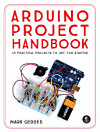Towards Design and Development of Secure and Privacy-Preserving Frameworks for IoT-enabled Networks
About this ebook
About the author
Prabhat Kumar received his Ph.D. degree in Information Technology, National Institute of Technology, Raipur, India in 2022, under the prestigious fellowship of Ministry of Human Resource and Development (MHRD) funded by the Government of India. He is currently working as a Post-Doctoral Research Fellow with the Department of Computer Science & Engineering, Indian Institute of Technology, Hyderabad, India. His research interests are Security and Privacy of the Internet of Thing, artificial intelligence, software-defined networking, Cybersecurity, and Blockchain. He has authored or coauthored over 20 publications in high-ranked journals and conferences. Some of his research findings are published in top cited journals, such as IEEE TRANSACTIONS ON INDUSTRIAL INFORMATICS (TII), IEEE TRANSACTIONS ON INTELLIGENT TRANSPORTATION SYSTEMS (TITS), IEEE TRANSACTIONS ON NETWORK SCIENCE AND ENGINEERING (TNSE), IEEE IoTJ, IEEE MICRO, JSA (Elsevier), ComCom (Elsevier), JPDC (Elsevier), ICDCN and IEEE ICC. He is an Expert Evaluator of top scientific journals and conferences, including IEEE TII, IEEE TITS, IEEE TNSE, IEEE TGCN, IEEE JBHI, IEEE IoTJ, IEEE Network Magazine, IEEE IoT Magazine, IEEE Access, ACM TALLIP, ComCom and IEEE ICC. He is also an IEEE Student Member.








